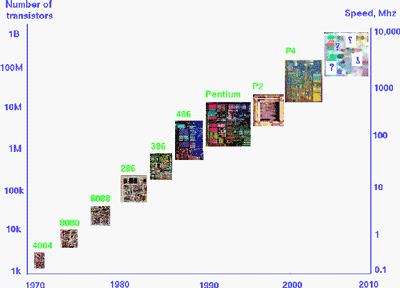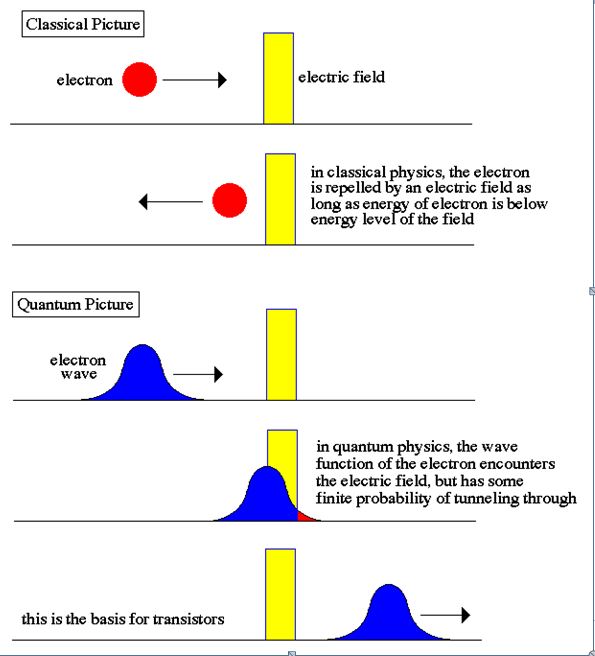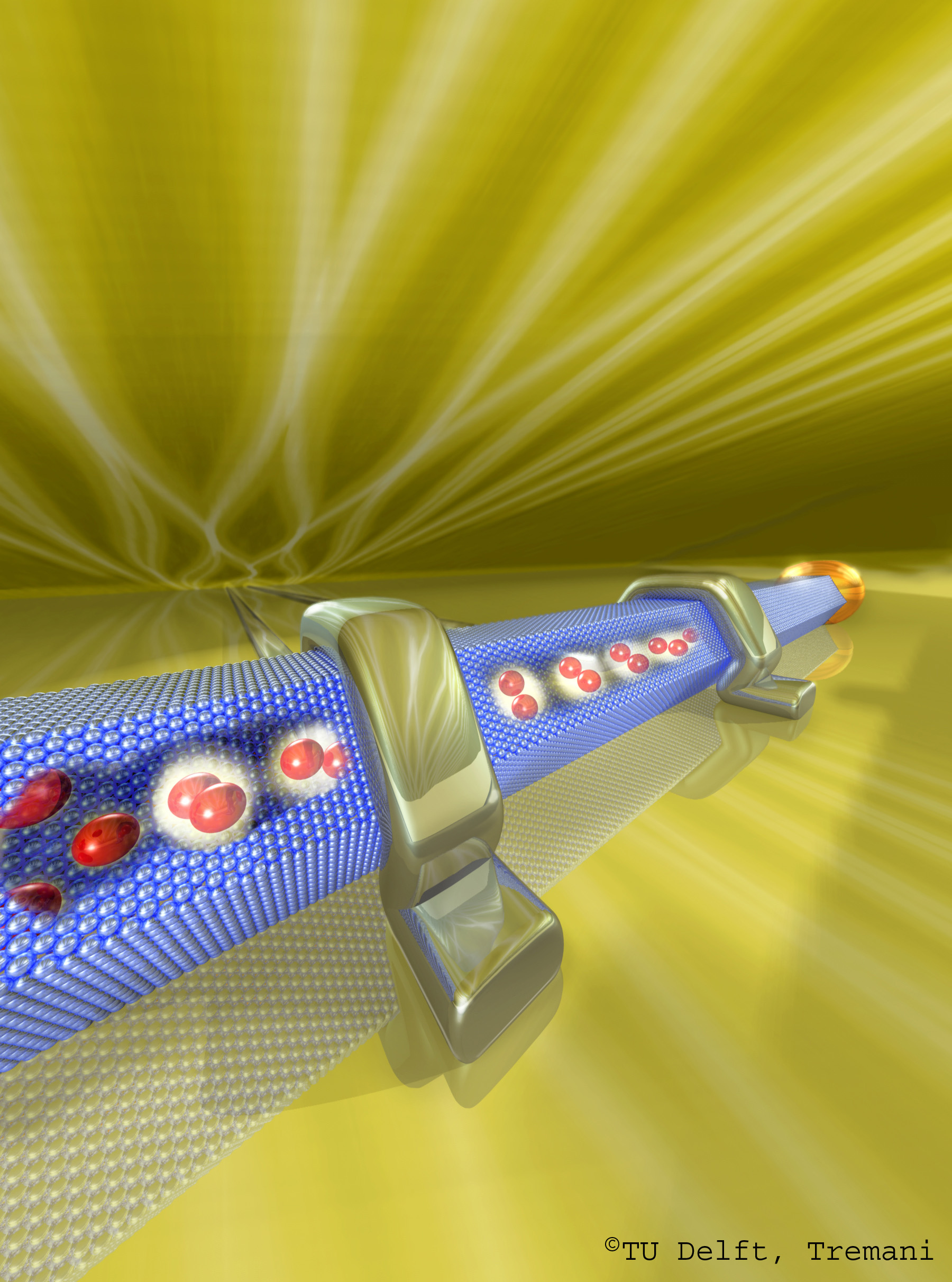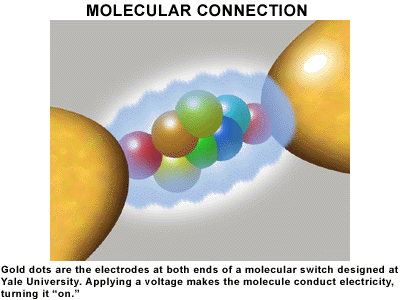Can Moore's Law reach a physical limit?
Some think so (but your prof disagrees - since photons will replace electrons soon).
The GMR Miracle Why computer memory started to dramatically grow.

A reasonable expectation is that the number of transistors that one can physically
place on a processor will reach some (photolithographic)or design limit. Therefore,
to maintain Moore's law will probably require different processor design.
Still Moore's law was "accidentally" stated in some marginal publication in 1965
and it still holds after almost 50 years!
Some consequences need to maintain Moore's Law:
- Multibillion-dollar factories have been built to produce these increasingly complex chips. The capital cost of chip factories also follows a doubling rule.
- Shrinking the size of transistors and the copper wires that connect them to fit more densely on a chip has also led to problems like electric leakage, increased power consumption and processors that generate a fair amount of heat.
 it is the dissipation of
this heat that many think ultimately limits processor speed. it is the dissipation of
this heat that many think ultimately limits processor speed.
Knowing something about how transitors work is also part of digital literacy. In particular, transitors work because of the nature of quantum tunnelling which allows electrons to penetrate barriers to reach the other side, even if they have insufficient energy to overcome the barrier:
The Story of the Transistor

Leonard Kleinrock's take on limitations of computing power:
- The physical size of the atom
- the size of human fingers (not a problem as voice eventually will be the medium of entering
commands)
- eye-brain information overload.
Also there has to be physical limitations on the size of transistors. At some point the source
and drain channels of the transistor will be so close to one another that the electrons will
simply hop directly between the two channels thus defeating the purpose of the transistor.
 This seems to be the fundamental limit to silicon based transistors. Estimates are that,
at the current rate of transistor shrinking, we will realize this limit in 10-15 years.
This seems to be the fundamental limit to silicon based transistors. Estimates are that,
at the current rate of transistor shrinking, we will realize this limit in 10-15 years.
Hence, it seems clear that to extend Moore's law into the indefinite future (but why, socially
do we want to do this? ) materials other than silicon will have to be used. Here are a few
potential technologies that go beyond silicon and could extend Moore's Law. Remember, we
are searching for systems that can return a bit or a state (i.e. ON vs OFF).
- Spintronics: This technique, heavily promoted by IBM, relies on interpreting the magnetic field created by an electron's spin (rather than the actual physical transport of electrons). Since
there are 2 spin states (up and down) 2 bits of information can be represented.
- Material Phase change: In this case a thin film of CD-like material is heated to a liquid to represent one state and rapidly cooled to represent another state. The conductivity in the liquid state is much higher
than the solid state so throughput current represents either a 1 or 0. Much of the industry is
investing in this technology as it offers faster response times. However, the durability of the
working material is somewhat questionable.
- Nanowires and nanotubes: These devices transport electrons from one point to another to create a 1 (or don't transport them, to create a 0). Unlike silicon, they don't leak and transport electrons rapidly. Unfortunately, no one yet knows how to put billions into arrays.

- Cross-Bar Latches
 advantage is that switched information can be done in a very small
scale. These devices work conceptually just like a tansistor using a sequence of voltage impulses to the control lines and using switches arranged in opposite polarities. advantage is that switched information can be done in a very small
scale. These devices work conceptually just like a tansistor using a sequence of voltage impulses to the control lines and using switches arranged in opposite polarities.
- Molecular switches:

Certain molecules, however, can be customized to configure in one of 4 specific states
depending on the applied voltage. This means we now have a 4 bit information state and
we have moved beyond binary.  Expect to see these
devices in your lifetime Expect to see these
devices in your lifetime
- Optoelectronics: Photons move faster through "conductors" (e.g. fiber optics) and do
not generate much if any heat. A photon is either present or not so there are two information
state available. It makes a lot of sense to eventually replace the two state electron (e.g.
electricity) with this optical binary system.
However, bringing optical technology down to the processor level is a monumental challange.
At this point, its an open question whether or not this technology beats out organic (e.g.
molecular) switching.
- The DNA Switch: DNA logic gates have been produced. Instead of using electrical signals to perform logical operations, these DNA logic gates rely on DNA code. They detect fragments of genetic material as input, splice together these fragments and form a single output.
DNA computers have the potential to take computing to new levels, picking up where Moore's Law leaves off. There are several advantages to using DNA instead of silicon:
- As long as there are cellular organisms, there will always be a supply of DNA
 so no materials problems so no materials problems
- Large and readily available supply of DNA means its cheap.
- Unlike the toxic materials used to make traditional microprocessors, DNA biochips can be made cleanly.
- DNA computers are many times smaller than today's computers
 One pound of DNA has the capacity to store more information than all the electronic computers ever built; and the computing power of a teardrop-sized DNA computer, using the DNA logic gates, will be more powerful than the world's most powerful supercomputer. One pound of DNA has the capacity to store more information than all the electronic computers ever built; and the computing power of a teardrop-sized DNA computer, using the DNA logic gates, will be more powerful than the world's most powerful supercomputer.
Ten trillion DNA molecules can fit into 1 cubic centimer. This corresponds to 10 tearabytes
of data in that volume! Of course, your brain is also a DNA computer so again, its not
clear that we really want to move this direction.
- EUV lithography: By using highly polished mirrors and a laser originally devised for missile defense, Extreme Ultraviolet machines can create lines a few nanometers in length due to the
shorter wavelength of the light source.
- Immersion Lithography: This involves drawing the circuits on chips with a laser while the wafer is immersed in purified water. The water refracts light, permitting it to draw finer circuits. First production runs started this quarter. To realize the full potential
of miniaturization with this technology, manufacturers will likely replace their silicon gates with gates made of metal.
There are several promising alternatives to basic
processing of electrons through silicon materials. Each of these alternatives promises more
powerful and smaller computers and memory devices. However, it remains unclear, whether we
as limited humans can really take advantage in a meaningful way of this increase in processing
power.
Additional reading on the uncertain future of Moore's law
|

 it is the dissipation of
this heat that many think ultimately limits processor speed.
it is the dissipation of
this heat that many think ultimately limits processor speed.
 This seems to be the fundamental limit to silicon based transistors. Estimates are that,
at the current rate of transistor shrinking, we will realize this limit in 10-15 years.
This seems to be the fundamental limit to silicon based transistors. Estimates are that,
at the current rate of transistor shrinking, we will realize this limit in 10-15 years.

